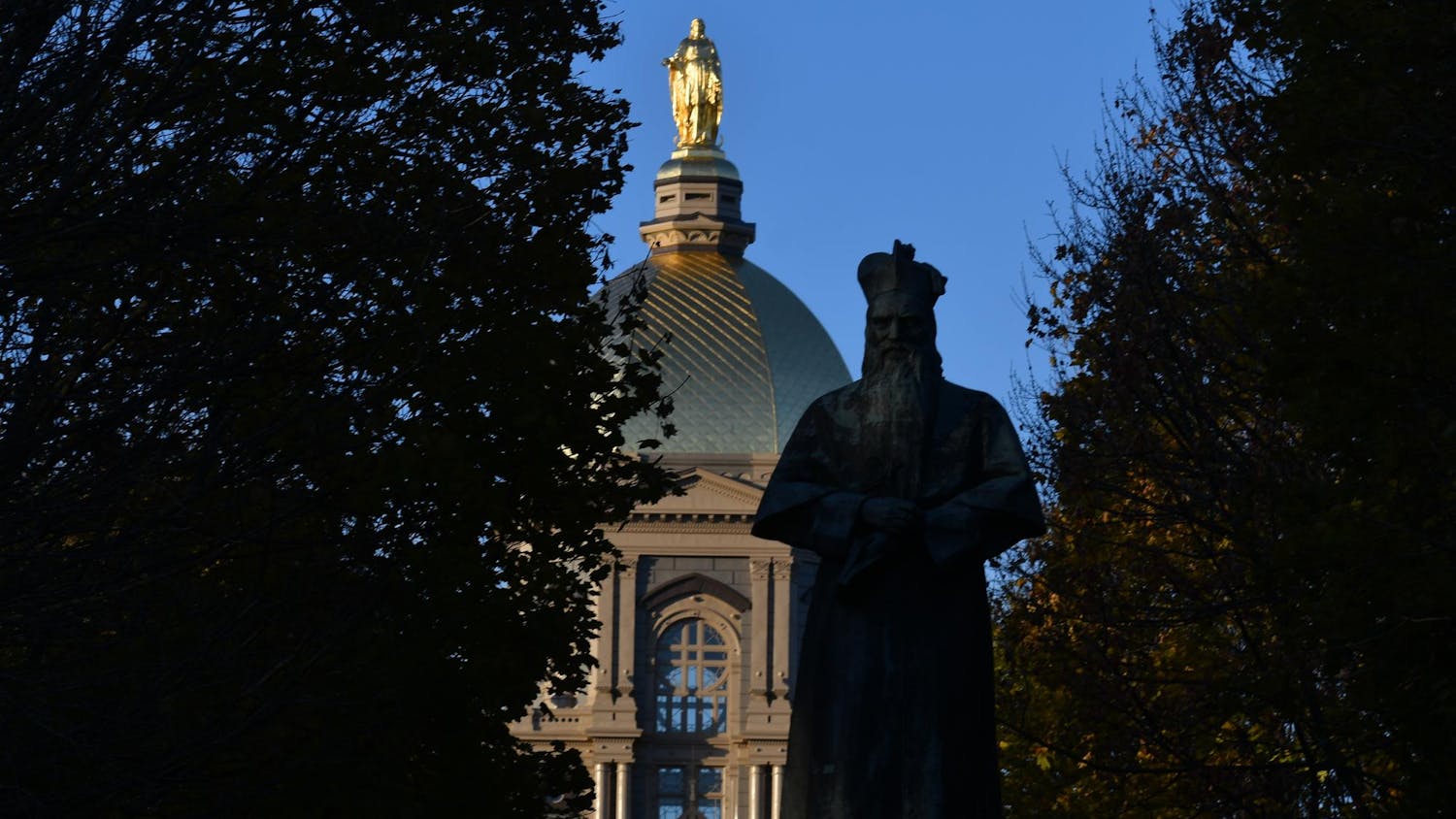Paul Kempf, senior director of Utilities and Maintenance at Notre Dame, provided an update on the state of the campus energy strategy in a seminar Friday. The update covered the progress Notre Dame has made toward sustainability and renewable energy goals, such as being coal-free by 2020, as well as plans for future projects, such as a hydroelectric dam on the East Race in South Bend.
Kempf said since power is so foundational to Notre Dame, reliability is always important when looking for ways to improve energy conservation, renewable energy and other factors, especially considering the constant growth of the University.
“We’re very concerned about being reliable, everyone wants reliable. We don’t like when the power goes out at home or the heat doesn’t work. Obviously, there’s a lot of activities that go on here at campus, we have research, a lot of public events that require reliability so that’s important,” Kempf said. “We also want it to be cost effective. Nobody really wants to spend more on energy than they really have to so that's important.”
A large portion of Kempf’s talk was devoted to an update about the state of the University’s progress toward sustainability and energy goals. The department has multiple plans for the development of increased sustainability and energy conservation at the University. These include a plan which looks out to 2050 and was created not only to set aspirational and meaningful goals, but also to be affordable, resourceful and above all, flexible, allowing for new developments in science and technology, Kempf said.
“We set goals of a 50% reduction by 2030, and that goal was based on a 2005 baseline for our carbon emissions,” Kempf said. “And by 2050, we’re looking for a reduction of 83%.”
The significant progress that the University is making towards these goals, as well as others, such as the goal to stop burning coal as a fuel source by 2020, is thanks in part to the resources the University has dedicated to the department.
“Over the last decade the University has afforded us about $19 million in resources, of which we’ve invested to date about $15 million,” Kempf said.
However, Kempf also said these advancements in sustainability and conservation do not just reduce carbon emissions and help the environment, but are also financially sustainable.
“You’re going to see a sort of payback year by year in what we’ve saved both in fuel and electricity use,” Kempf said. “So we’ve saved the University over $20 million.”
The seminar also gave an update on the state of current and future renewable-energy projects at Notre Dame. Initiatives discussed include various geothermal, solar and even wind and hydroelectric power projects.
Kempf said, often when trying a new renewable energy project, the department tends to start with something small.
“There’s been, to date, three geothermal projects,” Kempf said. “[The first one] was sort of an early pilot project for us to get our feet wet. You’ll see sort of a trend of this, where we like to do small or mid-sized projects so we can understand the technology, understand the engineering behind it and then sort of ramp up.”
However, this method can be more difficult to implement when applied to certain forms of renewable energy, like solar power, Kempf said.
“The payback in solar is more when you get to scale,” he said. “Little, small projects, unless you’re getting huge tax-credit benefits or things like that, are difficult to pay back.”
One of the major up-and-coming renewable energy initiatives discussed in the seminar was a plan for a hydroelectric dam on the St. Joseph River in South Bend.
“We’re coming back with sort of the third coming of hydro-power in South Bend,” Kempf said. “What we intend to do is, underground, build a channel system that comes in. And then in the back, there are 10 turbines that will generate electricity and then discharge the water back out.”
The plan has been in the works for a while, Kempf said, and while it looks like the project will soon break ground, getting to that point involved planning and communicating with a multitude of groups and organizations.
“The turbines are in storage, they’ve already been built. Probably the most difficult of the projects I’ve worked on in my 30 years here. You have to deal with the federal government, the state government, Indian tribes and everything you can imagine,” Kempf said. “We’ll probably complete it in 2020, it’s been an exciting project to work on.”
Sophomore Conor McDonough, who attended the seminar for an ethics class, said that he was impressed with the talk and Notre Dame’s progress and commitment to a sustainable future.
“I was very surprised at how much goes into keeping our campus sustainable,” McDonough said. “I know it’s a pretty political issue, but at the end of the day it affects everyone. If you have the resources and you’re an institution that people look to for guidance on how to address important issues, then Notre Dame has a responsibility to do as much as it can.”
Read More
Trending









